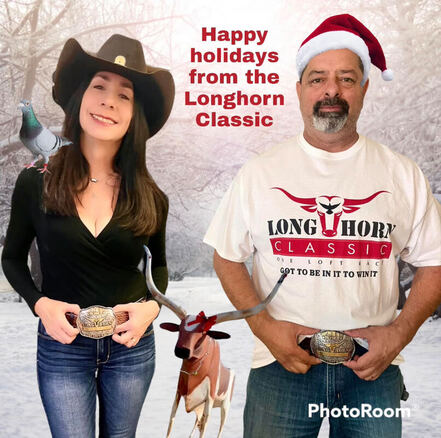|
I came across a question on Facebook the other day of how much space per pigeon is good for a one loft race. The group was discussing the possibility that overcrowding in the lofts as a reason OLRs are losing so many birds in recent years. I have been around pigeon racing my entire life and in my opinion, this is probably the least reason causing the bird losses. There are many factors and too many to cover today, so let's just start with this topic and I will cover other reasons in future emails.
Over the years, I've heard time and again that a loft should have 1 square foot of space per bird. But, this rule started when we had dark, closed-up lofts and we'd put a layer of lime then shavings on the floor to help keep the loft dry and cozy in the winter. These lofts housed both young and old birds. However, OLR’s are generally a young bird sport and most races are held during the warmer time of the year, so the most important factor with OLR lofts is climate and air flow. OLR lofts should be constructed with lots of airflow. A loft in a warm climate with a lot of airflow can have something like .75 foot per bird. However, closed-up lofts in areas that get extreme cold, need more like 1 square foot or more per bird. In conclusion, I think the biggest factor for loft size and capacity is based on climate and air flow. To help determine how much air flow is needed, go into your loft at night with a flash light, watch a bird ruffle its feathers and watch the cloud of bloom come off the bird. The bloom should float away, not get blown away. If it blows away, the loft is too drafty, and makes it harder to keep the birds in condition. The Longhorn Classic loft will be 1,496 square feet and take in 1,500 birds maximum.
0 Comments
The Champion Bird wins $10,000 plus a Champion Bird custom belt buckle with your loft name and breeder name. The video below shows the buckle we ordered for ourselves, but its an example of what you'll receive.
Thanksgiving weekend always marks the start of breeding season. As we recover from a day of eating way too much and the wives head out Christmas shopping, us guys head to the loft. We hang there for hours and go through our breeders wondering which are the best mating to breed next season's "First Drop Winner" or "Champion Bird".
We've cleaned the breeding loft, put the cocks in to let them pick their nest boxes, and looked at how many good pairs we have. Now we're deciding which One Loft Races to enter in the spring - of course the Longhorn Classic is at the top of the list ;) It's always an exciting weekend, full of anticipation. Whatever method you may have to pair your birds, here is a little something extra to help get the mood right. Good luck to everyone! We invite all of you to come celebrate with us as we christen our new 4-acre property in Alvord Texas!! We are excited to start building the Longhorn Classic loft.  How many of you have paid hundreds, or even thousands, of dollars in perch fees for birds that didn’t make it to the first race? Or even worse - after paying the entry fee, your birds were lost before the final race? Not only are you losing money, but you also don’t have the assurance that your current breeding schedule will be successful. Without results from completing a race series, you lack measurable breeding data. I asked Mike Ganus and Mathieu de Clippel how they prepare young birds for shipping to one loft races. Mike Ganus because he sent me 45 birds over a 3-year period and not one got sick. Mathieu De Clippel because he’s the Product Manager with Versele-Laga of Belgium and is involved in the Belgium Master One Loft Race. From these conversations, I put together pointers every breeder should consider:
I would like to thank Mike Ganus and Mathieu De Clippel for their time and helpful information. We would love your feedback and any breeding tips you have! |
Archives
December 2021
Categories
All
|



